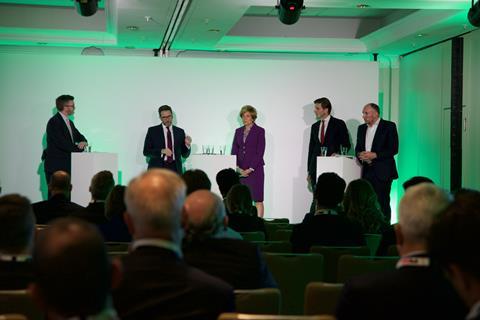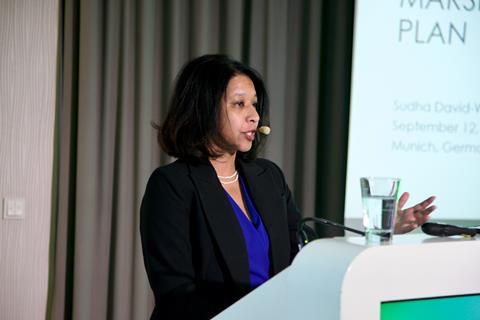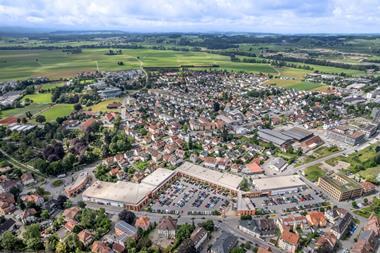The European Central Bank cut interest rates on Thursday last week. The decision is likely to have given some cheer to private-markets investors who have been attempting to adjust to a new environment of high interest rates.
But the gloomy weather in Frankfurt that day might have served as a reminder that challenges remain on the horizon. Some 300km away to the southeast, as the weather outside became increasingly cold and rainy, more than 100 institutional investors and advisers hunkered down inside in the Munich Marriott Hotel to address the challenges facing infrastructure markets.
A sneak preview was given of some of the findings of IPE Real Assets’s forthcoming annual survey of infrastructure investors. For the second year in a row, institutional investors were asked whether the asset class had been meeting their expectations, and the answer was overwhelmingly reassuring: 73% said it had performed in line with their expectations (up from 65% last year), while 12% said it had exceeded expectations. One pension fund investor was quoted as saying that the recent volatility of spiking inflation – and COVID-19 lockdowns before that – “was really the first time infrastructure had been tested and then delivered what it said on the tin”.
Armit Bambra, EMEA head of global client solutions at IFM Investors, said: “I really like that quote you just landed on, because I think that sums up a lot of our client conversations over the last few years, which is that this is an asset class which has proven out its resilience during what has been quite a difficult period post-COVID, and investors around the world have become a lot more accustomed to the benefits that infrastructure investing brings to their portfolio.”

During an onstage interview later in the day, Ahmed Mubashir, head of infrastructure for EMEA and India at Alberta Investment Management Corporation (AIMCo), said the Canadian institutional investor had studied the 10-year returns from infrastructure for seven of the big ‘Maple 8’ Canadian pension funds and found that they averaged approximately 10%.
He said this showed the asset class was “remarkably consistent when it comes to returns for the assets over the decade, even as hundreds of billions of dollars” are invested in a wide range of assets across the globe. Mubashir emphasised the importance of diversifying within infrastructure portfolios, to mitigate against asset-specific risk, but said the long-term performance of the asset class had been consistent with expectations of stability and resilience.
During a panel debate, Thomas van der Meij, senior portfolio manager at APG, which manages the investments of ABP, the largest pension fund in the Netherlands, said: “The main attraction that was mentioned during the presentation is clearly also valid for us. Stable cash flows, diversification in the portfolio, high barriers to entry, inflation protection. I think the only one that was missing – and I think is probably even more important – is also the attractive risk-return characteristics of the of the sector.”
Illustrating the appeal of the asset class, van der Meij said ABP was increasing its allocation to infrastructure from 5% to 7%.
Meanwhile, one of the largest Australian superannuation funds, Aware Super, has been building up its exposure to the asset class over the past decade from 4% so that it is now effectively fully allocated. “At 12% we’re starting to reach our ceiling in terms of what we want to take on as an asset class,” said Damien Webb, head of international and deputy CIO.
He said infrastructure had “delivered…from a portfolio construction point of view”, but there was now an “opportunity for the first time in a very long time” to selectively sell assets.
“We’re now looking at the opportunity set moving forward. We’re looking at what it requires to be successful in infrastructure,” Webb said. “We’re looking to reposition a fair chunk of the portfolio and recycle into other opportunities.”
Energy transition: huge opportunity, big risks
But infrastructure faces some major risks and challenges and chief among them seemed to be political and regulatory in nature. The conference began somewhat appropriately with a keynote talk on geopolitics by Sudha David-Wilp, senior transatlantic fellow and deputy director in the Berlin office of the German Marshall Fund of the US. David-Wilp explained how 2024 was proving the biggest election year in history, with national elections taking place in 40 countries, affecting three billion inhabitants.
The IPE Real Assets infrastructure investor survey also showed that political and regulatory risk had been identified as the biggest risk to infrastructure markets and the most significant obstacle to making new investments.
The issue is particularly relevant to the energy transition, which requires private investment which is estimated to run into trillions of dollars. Albena Vassileva, executive director in the infrastructure investment team of IFM Investors, said: “Going through an energy transition is largely a national policy matter and a financial matter, and it does require very strong political will,” she said. “And what we see right now, sadly, in 2024 compared to ‘21 or ’22 [is that] political will is not at its highest point to support the energy transition. We actually do see this even in countries in Europe where this would have been unthinkable years ago.”

Nick Langley, co-founder and senior portfolio manager at ClearBridge Investments, explained how investors must think about how cost-of-living and demographic pressures will feed through to political and central-bank policy. “If you consider that the millennials and Gen Z as a voting cohort will very shortly, be the largest… we could well see some pretty significant changes to public policy if your millennials and Gen Zs are trying to have families, trying to form households, trying to buy houses,” he said. “They are going to be looking for support from government and those politicians that want to get elected are going to come up with policies that support their voters.”
Webb was optimistic that the capital required to reach net zero would help “regulators and policy makers realise that they have to fight for that capital”. He said: “I think regulators will recognise that you need to make sure that your asset class or your sector is investable for private capital, because if you shut down that access it will be really hard to realise your plans.”
Asked about the importance of investors working with governments in this environment, IFM’s Vassileva said: “Undoubtedly, we need to be in dialogue with governments. Of all the asset classes out there, infrastructure is the most dependent on regulation and policy.
“Why? We are the custodians of essential assets that touch communities, individual consumers, key companies delivering key resources – so that will never go away.”
Vassileva said the correct approach “starts with being in a good position to have that dialogue”.
She continued: “It starts with doing the responsible thing – and that is also running the companies in a responsible way, not taking undue risk, being a good citizen. It doesn’t necessarily guarantee that at any point in time you’ll get the best regulatory regime, but at least it puts you in a good place to have that dialogue.”
To read the latest IPE Real Assets magazine click here.























